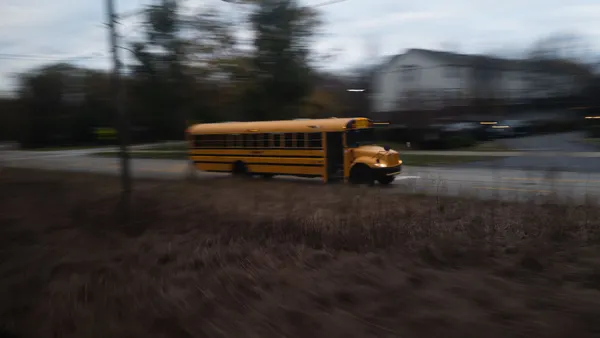Dive Brief:
- Indiana high school students with disabilities who spent more time in general education classes scored higher on state reading and math assessments and were better prepared for college and career than their peers in less inclusive settings, a study from Indiana University found.
- The research builds on a 2020 study from IU that examined outcomes for Indiana students in grades 3-8 whose primary disabilities included cognitive, learning and emotional disabilities, autism spectrum disorder, blindness, and deafness. Findings from that study showed students in more inclusive settings — regardless of their disability category — achieved significantly higher on state assessments than students in more restrictive settings.
- The two studies' findings seem to validate what federal special education law requires — that students with disabilities attend classes in the least restrictive environment to the extent possible — and what many special education professionals and advocates say is important for providing equitable educational opportunities.
Dive Insight:
The placement of students with disabilities is determined by their individualized education program team, which consists of teachers familiar with the student, specialized staff, an administrator, the student's parents or caregivers, and sometimes students themselves. The general education classroom is considered the least restrictive environment for students with disabilities.
The most recent study, conducted by Indiana University's Center on Education and Lifelong Learning and published in the Journal of Special Education, looked at academic outcomes for high school students in high inclusion settings — defined as 80% or more time spent in the general education classroom — and low inclusion settings, where less than 80% of time is spent in the general education classroom.
Reviews of outcomes on the state ISTEP assessment showed 10th graders with disabilities who spent 80% or more time in a general education classroom scored an average of 24.3 points higher in English/language arts and 18.4 points higher in math than their peers in low-inclusion settings.
Additionally, students with disabilities in high inclusion settings were 22% more likely than students in low inclusion settings to graduate with a Core 40 diploma by passing the state assessment rather than receiving a waiver. This is evidence that students in high-inclusion settings were more prepared for successful postsecondary educational and employment opportunities, according to the study.
Indiana has four diploma designations: general, Core 40, Core 40 with academic honors, and Core 40 with technical honors, according to the state education department's website. Earning a Core 40 diploma includes successfully completing a sequence of academically rigorous high school courses in the core subjects of English/language arts, mathematics, science and social studies, and physical education/health and wellness, and electives such as world languages, career/technical, and fine arts.
"Changing and elevating our expectations of what students with disabilities are capable of lies at the heart of people with disabilities contributing to and benefiting from being a part of our community experience, beyond K-12 education," said Hardy Murphy, co-author of the study and a clinical professor in the School of Education at Indiana University and Purdue University in Indianapolis, in a statement.
Nationally, 66% of students eligible for services under the Individuals with Disabilities Education Act ages 6-21 spent 80% or more of their time in general education settings in the 2020-21 school year, according to the U.S. Department of Education. Data on student placement in special education settings is monitored by local, state and federal education officials.
Although pandemic-related school building closures affected the 2020-21 school year, data from the previous five school years shows a steady year-over-year increase in the percentage of students with disabilities spending at least 80% of their time in general education classes.
The Education Department issued several guidance documents during the pandemic emphasizing the requirement for IEP teams to consider the least-restrictive placements for students with disabilities.







 Dive Awards
Dive Awards







